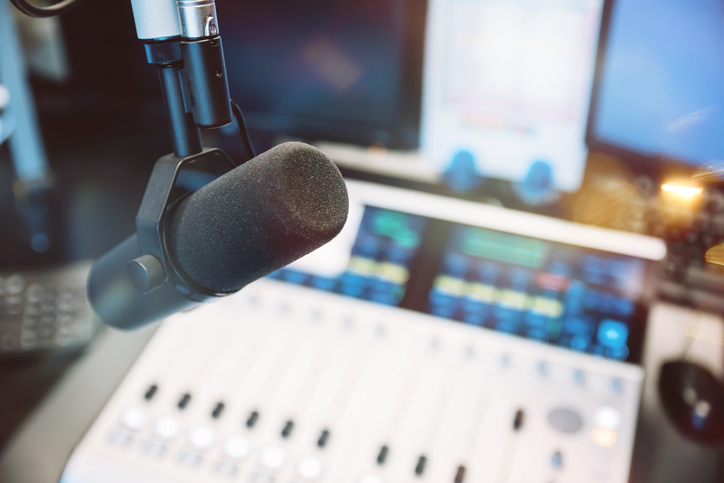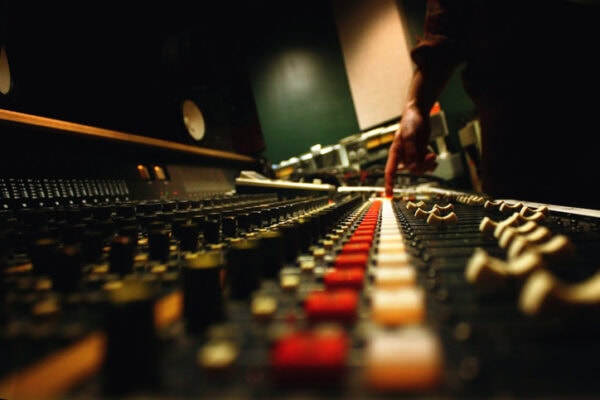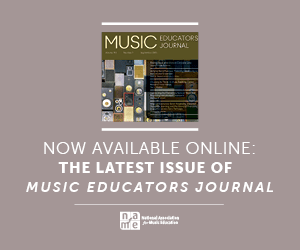/ News Posts / What Sly Stone Can Teach Us about Music Production Education
What Sly Stone Can Teach Us about Music Production Education
By NAfME Member José Valentino Ruiz, Ph.D.
Sly Stone is often remembered for his radical stage presence and his role in shaping the sound of funk and soul. But in the classroom, we often overlook something just as significant: He was also one of the earliest artists to transform the recording studio into a compositional instrument—well before the digital audio workstation (DAW) was commonplace.
In an era when major labels controlled studio access and dictated commercial expectations, Stone carved out creative independence by retreating into a home studio setup. He embraced overdubbing, drum machines, and isolation—not out of necessity, but as an aesthetic and political choice. For music educators looking to connect historical innovation to contemporary practice, his legacy offers a powerful lesson: Technology doesn’t hinder creativity—it can expand it, even liberate it.
The Studio as an Extension of Thought
What makes Sly Stone relevant for music educators today is not just what he recorded—but how. As early as 1971, Stone had moved his production into a self-contained home studio in the Hollywood Hills. This shift coincided with his creative control over There’s a Riot Goin’ On, which was assembled largely in solitude using overdubbing and analog tape layering.
According to Albin Zak in The Poetics of Rock, this method reflected a shift from recording as documentation to recording as authorship. The studio became a space where Stone composed, shaped, and reworked sonic ideas like brushstrokes on a canvas. It’s a concept now core to DAW-based music pedagogy, but in the early 1970s, it was almost unheard of outside of experimental circles.
Educators might use this moment to prompt students: What happens when the production environment is the instrument? How does that shape creativity?
Rethinking Rhythm: From Drummers to Drum Machines
One of Stone’s most radical moves was to replace live drums with the Maestro Rhythm King drum machine—most famously on the track “Family Affair.” The result was subtle but groundbreaking: rhythms that felt stripped down, repetitive, and hypnotically detached. As Andrew Bell notes in Dawn of the DAW, this marked a “redefinition of groove,” as Sly pushed listeners toward a new understanding of rhythmic feel—one that anticipated digital sequencing and sample-based beatmaking.
For music educators, this invites a useful teaching exercise: Challenge students to recreate a groove using both live percussion and a looped machine rhythm. Then compare the emotive impact of each version. Such an exercise demystifies technology while grounding it in historical context.
Building Songs like Structures
Stone’s recording process mimicked what we now recognize as the logic of sampling. Each overdubbed element—bass, clavinet, snare tick, vocal moan—could stand alone. They weren’t just parts of a band’s performance; they were building blocks, layered into place with precision. Scholar Walter Fulton argues that this modular approach laid the foundation for the fragment-based logic of hip-hop and electronic music.
In classroom settings, this legacy can be linked to current practices in beat-making and DAW composition. Encourage students to think like Sly: How can each track or sample serve both rhythm and narrative? How do textures create meaning?
Artist as Engineer: A Challenge to Studio Hierarchies
Historically, record labels in the 1960s and ’70s maintained strict control over the production process. Artists were often granted access to expensive studios only under tight schedules and corporate supervision. According to Ted Friedman’s study “Making It Funky,” artists like Stone and George Clinton actively resisted this model, turning to home-based setups that favored artistic autonomy over industrial efficiency.
This context helps students understand why DIY culture isn’t new. It’s a form of creative resistance with deep roots—especially in Black musical innovation. That’s a vital historical and cultural point for any inclusive music curriculum.
From Sonic Innovation to Pedagogical Application
Mark Masters’s High Bias frames the cassette and home-recording era as a pivot point in music education—one where creative experimentation flourished outside institutional studios. Similarly, Susan Rogers, in her work on Prince’s studio methods, underscores the value of “thinking with the console”—of building musical ideas through technical exploration.
This connects directly to how educators structure music tech instruction today. Instead of treating DAWs and plug-ins as tools to be mastered after composition, instructors can embed production into the composition process itself, just as Stone did. His work is a reminder that music education should not just teach how to replicate sound—it should help students learn how to shape it.
Classroom Takeaways for Music Educators
- Teach the studio as instrument: Frame software like Logic, Ableton, or FL Studio not just as production tools, but as extensions of musical thought—spaces for experimentation.
- Assign creative limitations: Inspired by Sly’s minimal drum programming, challenge students to create full pieces using limited rhythmic material or just one melodic loop.
- Incorporate sampling history: Explore how overdubbing and repetition in early funk paved the way for sampling. Use Sly’s There’s a Riot Goin’ On as a case study.
- Model self-production: Offer assignments where students must record, mix, and produce a track on their own—reflecting the autonomy Sly sought.
- Connect culture to technology: Discuss how Black musicians innovated under systemic constraints—making the studio a site of resistance and self-expression.
Why Sly Still Matters
As music production becomes more democratized, and as education shifts toward hybrid, self-guided, and tech-mediated environments, Sly Stone’s legacy grows only more relevant. He saw the studio not as a constraint but as a collaborator. In doing so, he redefined what it means to compose, to produce, and to sound like yourself.
For today’s students, that might be the most important lesson of all.
References
Bell, A. P. (2018). Dawn of the DAW: The studio as musical instrument. Oxford University Press.
Friedman, T. (1993). Making it funky: The politics and aesthetics of funk on Parliament’s Mothership Connection. Cultural Critique, 24, 157–176.
Fulton, W. (2017). Reimagining the collective: Black popular music and recording studio innovation, 1970–1990 [Doctoral dissertation, University of California, Riverside]. ProQuest.
Masters, M. (2023). High bias: The distorted history of the cassette tape. University of North Carolina Press.
Patrin, N. (2020). Bring that beat back: How sampling built hip-hop. University of Minnesota Press.
Rogers, S. (2020). Pop life: Prince in the recording studio. Popular Music and Society, 43(5), 467–483.
Williams, J. A. (2022). “This year’s model”: Toward a Sloanist theory of popular music production. The Musical Quarterly, 105(3–4), 320–351.
Zak, A. (2001). The poetics of rock: Cutting tracks, making records. University of California Press.
About the author:
 NAfME member José Valentino Ruiz, Ph.D. is a multi–Grammy Award-winning producer, audio engineer, and educator specializing in remote music production and cross-genre collaboration. With over 150 commercial releases spanning jazz, Latin, funk, pop, and gospel, his work bridges the worlds of academic research and industry innovation. As a globally-recognized recording artist and professor of music business and entrepreneurship, Dr. Ruiz champions an integrative approach to creative entrepreneurship and audio education in the digital age. For more information, visit his page.
NAfME member José Valentino Ruiz, Ph.D. is a multi–Grammy Award-winning producer, audio engineer, and educator specializing in remote music production and cross-genre collaboration. With over 150 commercial releases spanning jazz, Latin, funk, pop, and gospel, his work bridges the worlds of academic research and industry innovation. As a globally-recognized recording artist and professor of music business and entrepreneurship, Dr. Ruiz champions an integrative approach to creative entrepreneurship and audio education in the digital age. For more information, visit his page.
Did this blog spur new ideas for your music program? Share them on Connect! Interested in reprinting this article? Please review the reprint guidelines.
The National Association for Music Education (NAfME) provides a number of forums for the sharing of information and opinion, including blogs and postings on our website, articles and columns in our magazines and journals, and postings to our Connect member portal. Unless specifically noted, the views expressed in these media do not necessarily represent the policy or views of the Association, its officers, or its employees.
Published Date
September 11, 2025
Category
- Careers
- Culturally Relevant Teaching
- Innovation
- Race
- Representation
- Technology
Copyright
September 11, 2025. © National Association for Music Education (NAfME.org)






